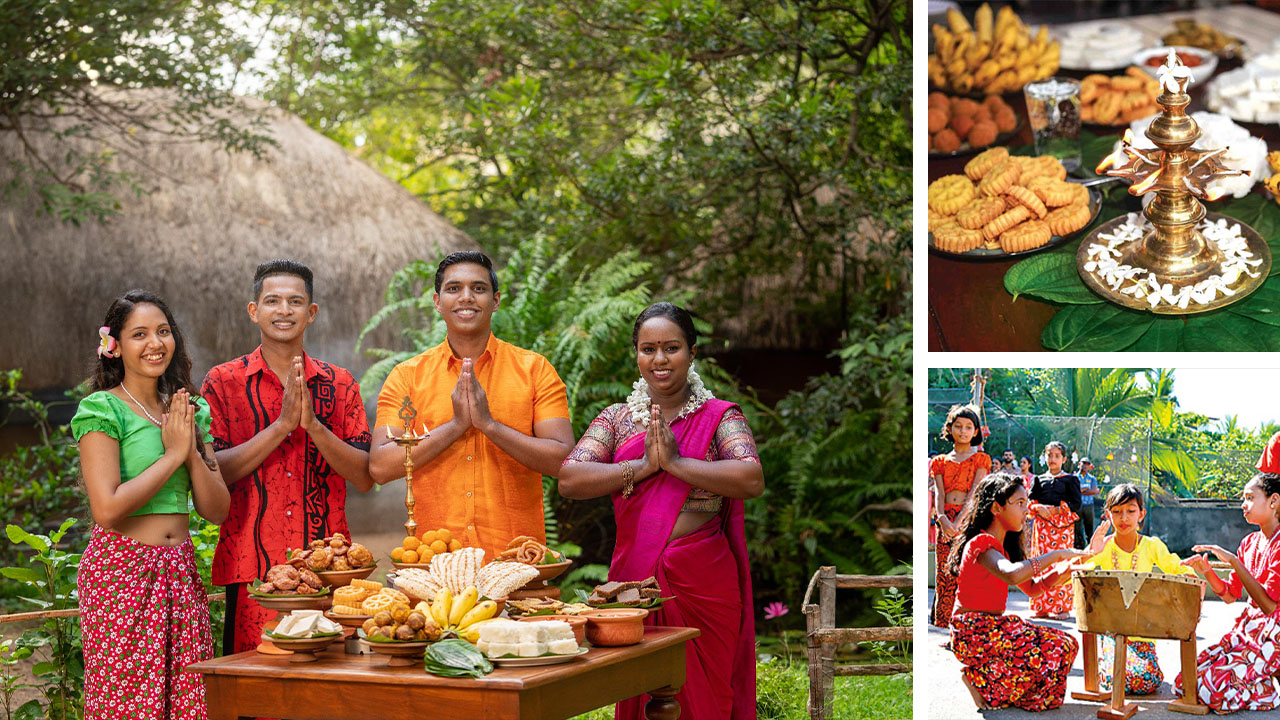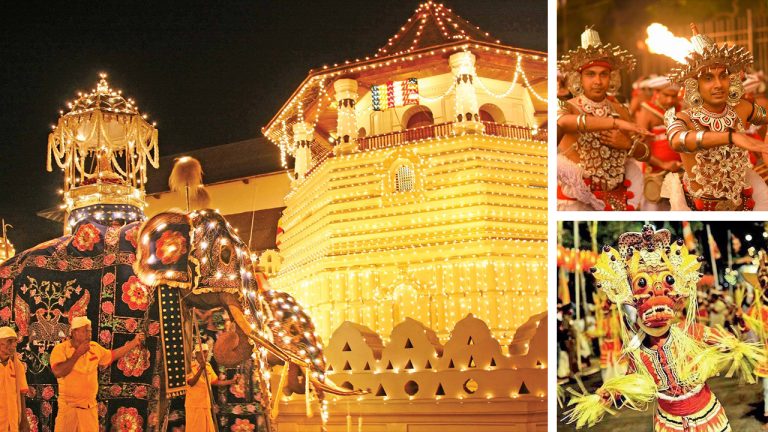Sinhala & Tamil New Year Festival
The Sinhala & Tamil New Year Festival, known as “Aluth Avurudda” in Sinhala and “Puthandu” in Tamil, is a vibrant celebration deeply rooted in the cultural heritage of Sri Lanka. This festival marks the transition of the sun from Pisces to Aries, symbolizing the beginning of a new astrological year. It typically falls in mid-April, signifying the dawn of the harvest season and is a time for joyous festivities, cultural rituals, and communal gatherings.
Significance and Cultural Importance
The New Year Festival holds profound significance, reflecting the agrarian roots and communal harmony prevalent in Sri Lankan society. It celebrates the spirit of unity among different ethnic groups and signifies the prosperity brought by the harvest season.
Preparations and Customs
Preparations for this auspicious occasion begin weeks in advance. Homes are thoroughly cleaned, signifying the purification of the mind and body. Intricate kolam designs are drawn at the entrance to welcome prosperity. Festive dishes like “kiribath” (milk rice) and a variety of sweets are prepared, symbolizing the sweetness and prosperity of the coming year.
Avurudu Games and Activities
During this festive period, communities come together to engage in traditional games and activities. Games like ‘kana mutti’ (pillow fights), ‘kotta pora’ (pot-breaking), and ‘eya adiya’ (tug-of-war) are played, fostering a sense of camaraderie and fun among participants.
Symbolism and Traditions
The New Year dawn is marked by auspicious times determined by astrologers, signifying the moment of transition and the commencement of the New Year. Lighting the hearth, exchanging gifts, and seeking blessings from elders are integral customs observed during this time.
Regional Variations
While the essence of the festival remains the same across Sri Lanka, there are regional variations in customs and practices. Different communities may have unique ways of celebrating, adding diverse flavors to the festivities.
Modern Celebrations
In contemporary times, the New Year celebrations have adapted to modern lifestyles. Technology plays a significant role, with social media and online platforms becoming avenues for sharing greetings and spreading festive cheer.
Impact and Cultural Significance
The festival plays a crucial role in preserving Sri Lanka’s rich cultural heritage. It strengthens familial bonds, fosters unity, and instills a sense of pride in traditions passed down through generations.
Conclusion
The Sinhala and Tamil New Year Festival encapsulates the essence of unity, tradition, and joyous celebration. It is a testament to the cultural richness and communal harmony deeply ingrained in Sri Lankan society.
FAQs
What is the significance of the Sinhala & Tamil New Year?
The festival marks the beginning of the astrological year and the harvest season, signifying prosperity and unity.
How do people prepare for the New Year celebrations?
Homes are cleaned, traditional dishes are prepared, and customs like lighting the hearth are observed.
What are some traditional games played during Avurudu?
Games like pillow fights, pot-breaking, and tug-of-war are commonly played during the festival.
How has technology influenced New Year celebrations?
Technology has modernized celebrations, with social media being used for sharing greetings and spreading festive cheer.
What is the cultural significance of the New Year Festival?
It plays a vital role in preserving cultural heritage, fostering unity, and strengthening familial bonds.
If you have and Questions? Contact Us. Click Here



